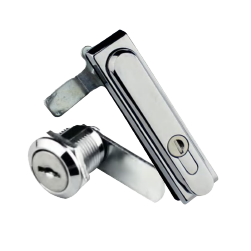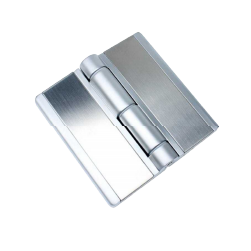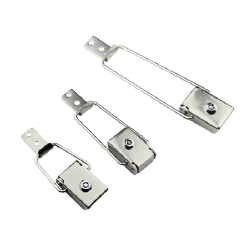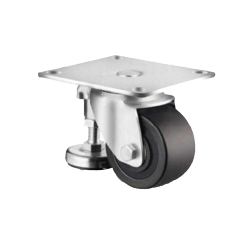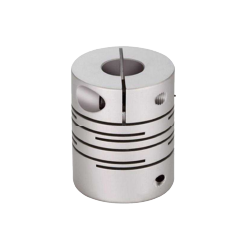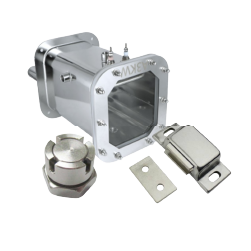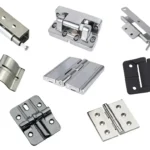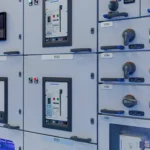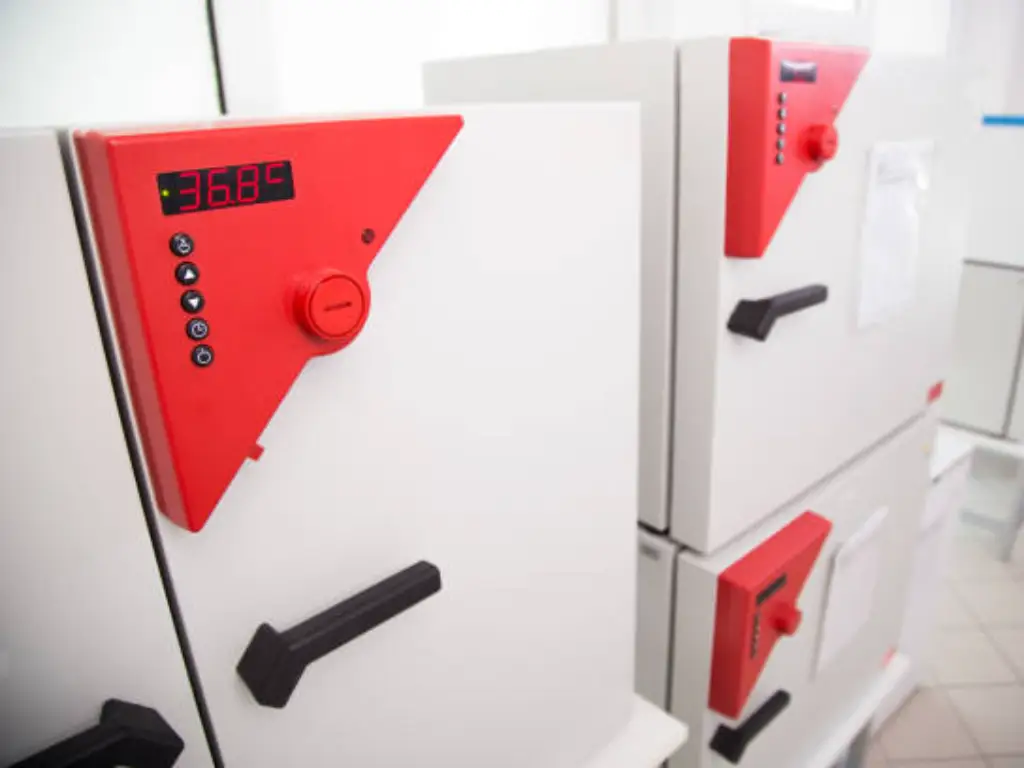
Product failure is not only a nuisance in the context of contemporary manufacturing and engineering, but it is a life-threatening danger that comes at a significant financial and reputational price. The necessity to detect possible areas of failure prior to the launch of a product into the market has resulted in the creation of highly specialized test equipment. The thermal shock chamber is one of the most important of these, a device that exposes products to extreme and rapid changes in temperature. This guide gives a direct analysis of its principles, the standards that guide its use, and the factors that determine its long-term reliability, which are mostly ignored. We will examine its functionality, distinguish its core technologies, and discuss the basic issues of its construction and work, and it gives a clear guideline to engineers, manufacturers, and procurement specialists.
What Is a Thermal Shock Chamber and Why It Matters
A thermal shock chamber is a special item of test equipment that is used to carry out a very narrow type of accelerated stress test. Its main purpose is to subject a product or a component to alternating, abrupt, and extreme changes between high and low temperature areas. A thermal shock test does these transitions within a few seconds, as opposed to a standard temperature test chamber, which may slowly increase or decrease the temperature. The idea is to recreate in a condensed period of time the stress that a product may undergo over a period of years of service in a fluctuating temperature environment.
The essence of this stringent product testing is to reveal hidden flaws in design, materials, or manufacturing procedures. Mechanical stress is caused when materials contract and expand at different rates because of the rapid change in temperature. This stress may result in microscopic cracks and propagation, solder joints, seals, and component delamination. These are the failures that may not be noticed in normal operating conditions until it is too late.
The thermal shock test is a validation tool that cannot be ignored in product development. It assures that a product will survive the worst conditions it is likely to experience, such as an avionics controller in a sub-zero high-altitude area, then a hot tarmac, or an automotive sensor in a series of engine heat and cold soak cycles. As a non-destructive technique to control quality, it can be used to audit the consistency of production and verify that the components can be used to meet the necessary durability specifications before being incorporated into a final assembly. By causing such failures to happen under the controlled conditions of an environmental chamber, manufacturers can eliminate large-scale field failures, expensive recalls, and safeguard brand integrity.
Understanding Key Types and Operating Principles
The performance of a thermal shock chamber is characterized by the capability of moving a Device Under Test (DUT) between two extreme temperature setpoints as quickly as possible and as thermally uniformly as possible. Two major technologies are used to accomplish this: Air-to-Air and Liquid-to-Liquid thermal shock. Although the two serve a similar purpose, their principles of operation, their benefits, and use are very different. These differences are essential to a proper choice of test equipment in a specific application.
The most widespread one is the Air-to-Air test chamber, and it is further split into two sub-types: two-zone and three-zone systems. These systems are selected based on the needed throughput, the nature of the DUT, and a set of test standards requirements. The Liquid-to-Liquid system presents a much more demanding test, which is only applicable to certain components and materials that require the highest possible thermal transfer rate.
These systems are compared directly below:
| Feature | Air-to-Air (Two-Zone) | Air-to-Air (Three-Zone) | Liquid-to-Liquid |
| Operating Principle | A basket mechanically moves the DUT between a static hot chamber and a static cold chamber. | The DUT remains stationary in a central test chamber while pre-conditioned hot or cold air is rapidly diverted into it. | A basket mechanically moves the DUT between two separate tanks, each filled with a thermally stable, non-conductive fluid. |
| Advantages | Simple, reliable mechanism. Lower initial cost. Suitable for a wide range of product testing. | No DUT movement, allowing for easier instrumentation and cabling. Higher throughput as the hot and cold chambers can recover while the DUT is tested. | Extremely high rate of thermal transfer, delivering the most severe thermal shock. Ensures uniform temperature across complex geometries. |
| Disadvantages | Slower throughput as the entire mechanism must move. Cabling to the DUT can be more complex and subject to wear. | More complex airflow and damper system. Higher initial cost and larger footprint than a two-zone system. | Limited to DUTs that are immersible and chemically compatible with the fluid. Potential for fluid drag-out, requiring cleaning. Higher operational cost. |
| Typical Workflow | 1. DUT soaks at one temperature. 2. Basket transfers to the other chamber in <10 seconds. 3. DUT soaks at the new temperature. 4. Cycle repeats. | 1. DUT soaks in the test chamber at one temperature. 2. Dampers switch, flooding the chamber with air from the other temperature zone. 3. DUT soaks. 4. Cycle repeats. | 1. DUT soaks in one fluid tank. 2. Basket transfers to the other tank. 3. DUT soaks in the new fluid. 4. Cycle repeats. |
| Common Applications | General electronics, automotive components, finished products, and aerospace assemblies. | High-volume production testing of smaller components like semiconductors and circuit boards, where test time is critical. | Bare circuit boards, integrated circuits, and specific military and aerospace components where maximum thermal stress is required by standard. |
Decoding Critical Performance Standards and Metrics
Temperature cycling and thermal shock testing procedures are not arbitrary. They are controlled by a series of strict international standards that make test results repeatable, reliable, and relevant. To the engineers and manufacturers, it is not merely a matter of compliance with these standards, but it is a question of understanding the language of product reliability. Organizations such as the Joint Electron Device Engineering Council (JEDEC), the International Electrotechnical Commission (IEC), and the U.S. Department of Defense (MIL-STD) provide key standards that determine the exact parameters of a test.
Three of the most important performance measures, as defined by these standards, are:
1. Temperature Range: This is the lowest (cold) and highest (hot) temperature the DUT should be subjected to. As an example, a typical commercial electronics operating temperature may be -40 °C to 125 °C, whereas a military or aerospace system may require -65 °C to 150 °C or more. These setpoints should be highly stable even when the thermal load of the DUT is applied to the heating and cooling system of the chamber.
2. Transfer Time: This is the maximum time that the DUT can be allowed to take to transfer between the two temperature zones. This is a few seconds in the case of most standards. The nature of thermal shock is a fast transfer, which does not allow the DUT to recover and stabilize in temperature, thus maximizing the stress induced. A chamber failing to satisfy the stipulated transfer time is not conducting a real thermal shock test.
3. Recovery Time: This is the time that it takes the air (or liquid) in the chamber to reach its desired temperature setpoint once the DUT has been added. A hot DUT in the cold zone increases the ambient temperature; a cold DUT in the hot zone increases the ambient temperature. The cooling system and heating components of the chamber should be strong enough to overcome this load and restore the temperature within the time constraint of the standard (e.g., within 15 minutes). A slow recovery time will nullify the test, since the DUT will not be subjected to the entire period of the desired thermal soak.
Compliance with these measures, as confirmed by the controller of the chamber and data records, is not negotiable. It is the sole means of assuring that a successful test is a true measure of a strong product and a failed test is a valuable source of design information.
The Unseen Challenge: Ensuring Structural Integrity
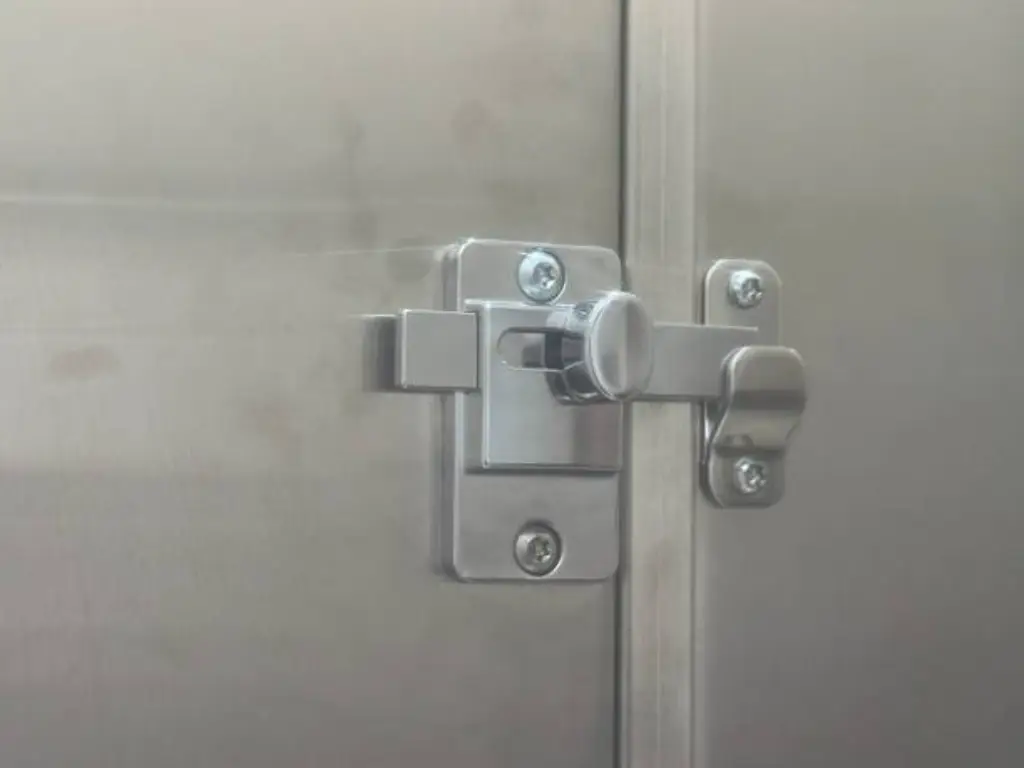
A thermal test chamber is nearly always evaluated in terms of its thermal performance: the strength of its cooling system, the effectiveness of its heaters, and the accuracy of its controller. Although these are admittedly crucial, there is a basic element of chamber design that is often ignored but predetermines its long-term sustainability: its structural integrity. A thermal shock chamber is a place of unceasing, violent physical transformation. Its capability to survive its own test process thousands of times is based on its mechanical and structural design.
Consider the chamber door. The door in most industrial-grade environmental chambers is an oversized, heavily insulated structure weighing more than 100 kilograms. It is under extreme pressure differentials formed by the extreme temperature gradients. The hinges, latches, and handles that hold this door together should not fail to meet these forces. Hinge sag may cause a break in the seal, resulting in thermal leakage, power waste, and non-conformance to temperature uniformity requirements. One of the safety hazards is a latch failure under pressure.
Moreover, even the materials themselves are in an endless struggle with physics. Each metal and plastic part is contracting and expanding with every cycle. This fatigue is experienced in the frame, the internal walls, the basket transfer mechanism, and all the individual fasteners. Without proper specification of the materials or without the design taking into consideration the thermal expansion, the structure will definitely weaken. Welds may crack, panels may warp, and seals may lose their elasticity and cause premature defects in the chamber itself. The seal integrity is of the utmost importance; a small violation is a violation of the closed system, which makes the heating and cooling system work more intensively and frequently is unable to ensure the necessary temperature stability, which invalidates the test results.
Selecting Hardware for Extreme Temperature and Sealing
The problem of structural integrity should be addressed with a conscious emphasis on the industrial hardware- the elements that unite the whole assembly and guarantee its working efficiency. To manufacturers of environmental chambers, the choice of these parts is not a procurement consideration; it is a fundamental engineering consideration. The specifications should not be limited to mere mechanical requirements but should include performance under extreme thermal conditions.
Manufacturers need to take into account the following when choosing locks, hinges, and handles:
- Material Science: Reliability is based on the selection of material. Normal steel or aluminum might not be enough. High-grade stainless steel, e.g., SUS304 or SUS316, is commonly needed because of its better corrosion resistance and its capability to retain mechanical properties over a broad temperature range. Low-temperature ductility and high-temperature stability of plastic and composite parts should be specified to avoid brittleness and softening.
- Sealing Mechanism: A latch is not only a closing device; it is a pressure tool. The force needed to fully engage the door gasket to form an airtight seal capable of withstanding pressure differentials requires cam-action or compression latches. This pressure should be distributed equally throughout the door frame in the design.
- Durability and Load Bearing: Hardware should be rated not only to the weight of the door when in the stationary position, but also to the dynamic forces of opening and closing the door repeatedly. The hinges should be designed to prevent sagging due to a lifetime of usage, which may exceed 20,000 cycles. The ability to carry a load is a direct measure of strong design and quality of materials.
- Corrosion Resistance: The inside of a test chamber may undergo condensation, which forms a humid environment. The hardware should be anti-corrosive. Standardized salt spray tests usually confirm this, and quality components should last 400 hours or longer without deterioration.
A Manufacturer’s Perspective: The KUNLONG Standard
At KUNLONG, we have more than twenty years of experience in the design and production of the main structural elements of the leading manufacturers of environmental test chambers in the world. We do not consider these components as commodities, but as essential systems that directly influence the performance, safety, and reliability of the final equipment. We design our hardware with an in-depth knowledge of the harsh conditions in which it will be used.
Our solutions are designed to confront these particular challenges. Our products are tested to be able to work between -70 o C and 260 o C. Our materials, such as SUS304 stainless steel or specialized polymers, are chosen because of their proven performance. Our compression latches and hinges are heavy-duty to handle high loads, and offer the strong, consistent sealing pressure needed to achieve thermal stability. This quality assurance is confirmed through rigorous in-house testing, such as corrosion resistance of more than 400 hours of salt spray.
Understanding that design efficiency is just as significant as the product itself, we offer manufacturers a complete library of 3D models. This enables their engineering departments to incorporate our components into their CAD models, saving them a lot of time and making sure that they fit perfectly. KUNLONG offers a one-stop, technically competent solution, which allows manufacturers to construct high-quality thermal test chambers with the confidence of their structural integrity over time.
Beyond Chambers: Reliability in Demanding Industrial Environments
The concepts of structural integrity under severe thermal loading are not limited to thermal shock test chambers. They can be used universally on a broad spectrum of other environmental test equipment and challenging industrial applications. The experience of designing to withstand the most extreme temperature cycling conditions is a useful guide to reliability in any controlled environment.
Think of a humidity chamber, in which the difficulty is not merely temperature but also high-moisture conditions maintained. The hardware in this case should have an outstanding corrosion resistance to avoid rust and failure. The same grade stainless steel and strong sealing mechanisms that are needed in a thermal shock chamber are also essential in determining the life and precision of a humidity chamber.
Likewise, industrial ovens, cold storage, and special transport containers of sensitive materials have their own environmental issues. An industrial oven needs hardware that is capable of operating under high temperatures over time without mechanical degradation or failure. Components that will not become brittle or freeze at low temperatures are needed in a cold storage unit. In both instances, the choice of latches, hinges, and handles is a decisive component in the overall performance, safety, and life cycle of the equipment. The lesson here is that the strength of any enclosed system can only be as strong as the parts that hold it together.
FAQ about Thermal Shock Chambers
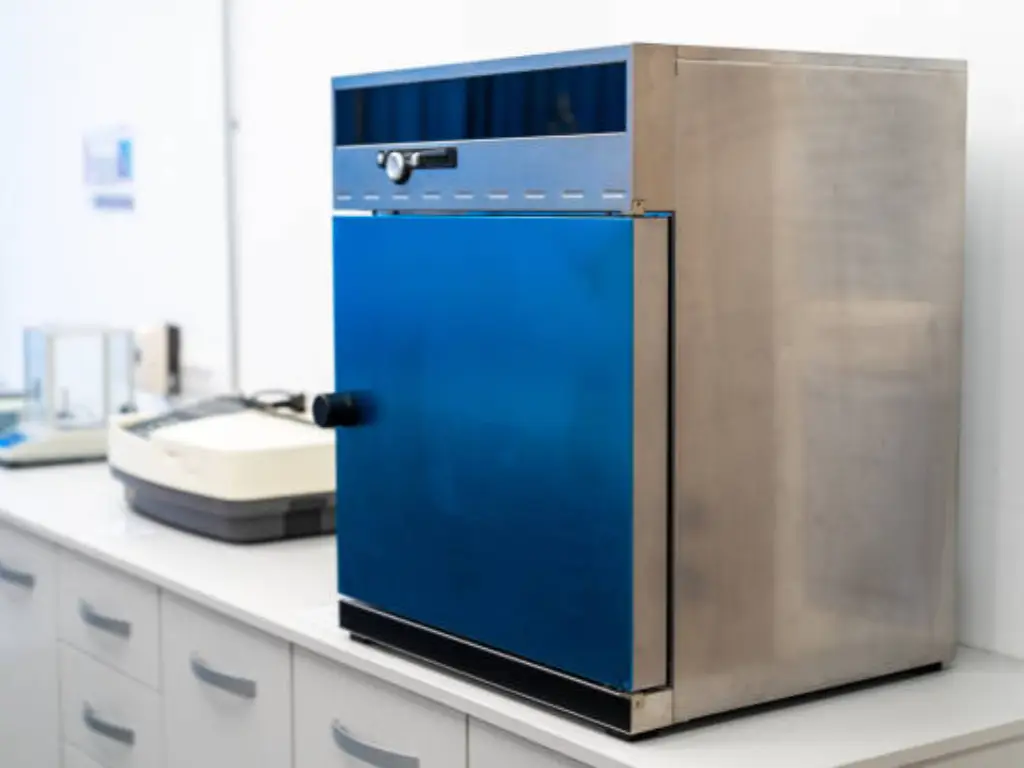
- What is the main difference between thermal shock and temperature cycling?
Although both are types of temperature tests, the rate of transition of temperature defines thermal shock. A thermal shock test normally involves the DUT being transferred between temperature areas within seconds to ensure thermal stress is maximized. Temperature cycling, by contrast, is slower and involves ramped temperature variations and is typically employed to investigate fatigue on a longer-term basis.
- How do I choose between an Air-to-Air and a Liquid-to-Liquid chamber?
The option will be determined by the DUT and the severity of the test that is needed. Most electronic and mechanical assemblies are air-to-air appropriate. A much more intense test is liquid thermal shock because the rate of heat transfer of the liquid is greater. It is generally used on bare circuit boards, semiconductors, and other components that can be safely immersed and demand the utmost stress screening as required by some military or ISO standards.
- Why is chamber load capacity important?
The load capacity is the mass that the heating and cooling system of the chamber can successfully handle. Each DUT you put in the chamber gives a thermal load. A congested chamber will not be able to achieve the required recovery times, which may nullify the test results. The choice of a chamber that has a thermal capacity that is appropriate for your intended test items is vital.
- What are common signs of a structural problem in a thermal shock chamber?
The typical signs are the inability to close or latch the door, the presence of condensation or frost around the door seals (which is a sign of a leak), and uneven temperature measurements in the chamber. Corrosion on hinges or latches that are visible must also be dealt with as soon as possible because it is a precursor to mechanical failure.
- Can I test powered-on products in a thermal shock chamber?
Yes, it is common practice. The operational testing of a DUT may demonstrate other failure modes which would not otherwise be observed, e.g., solder joint failures under thermal and electrical stress. This, however, must be set up carefully with appropriate wiring pass-throughs to maintain the safety and integrity of the chamber and the DUT.

